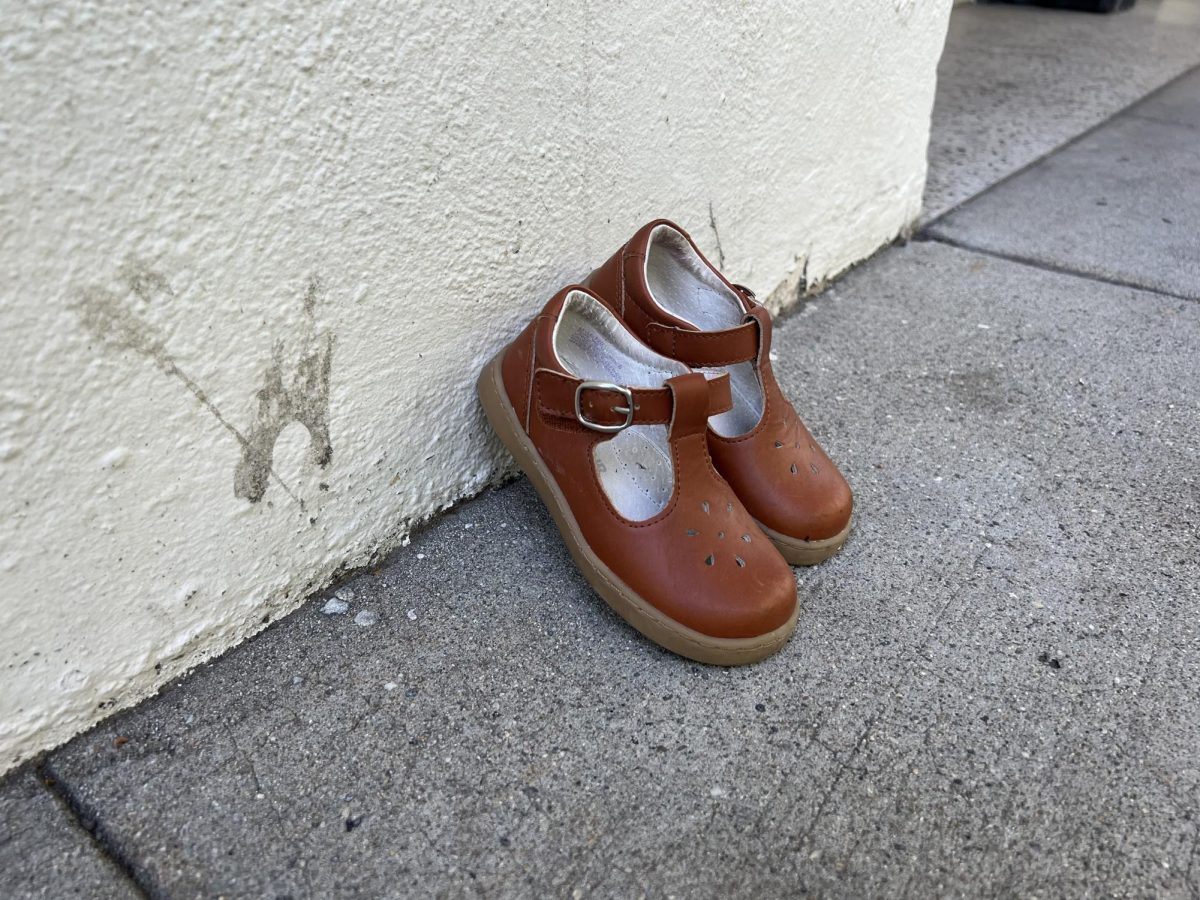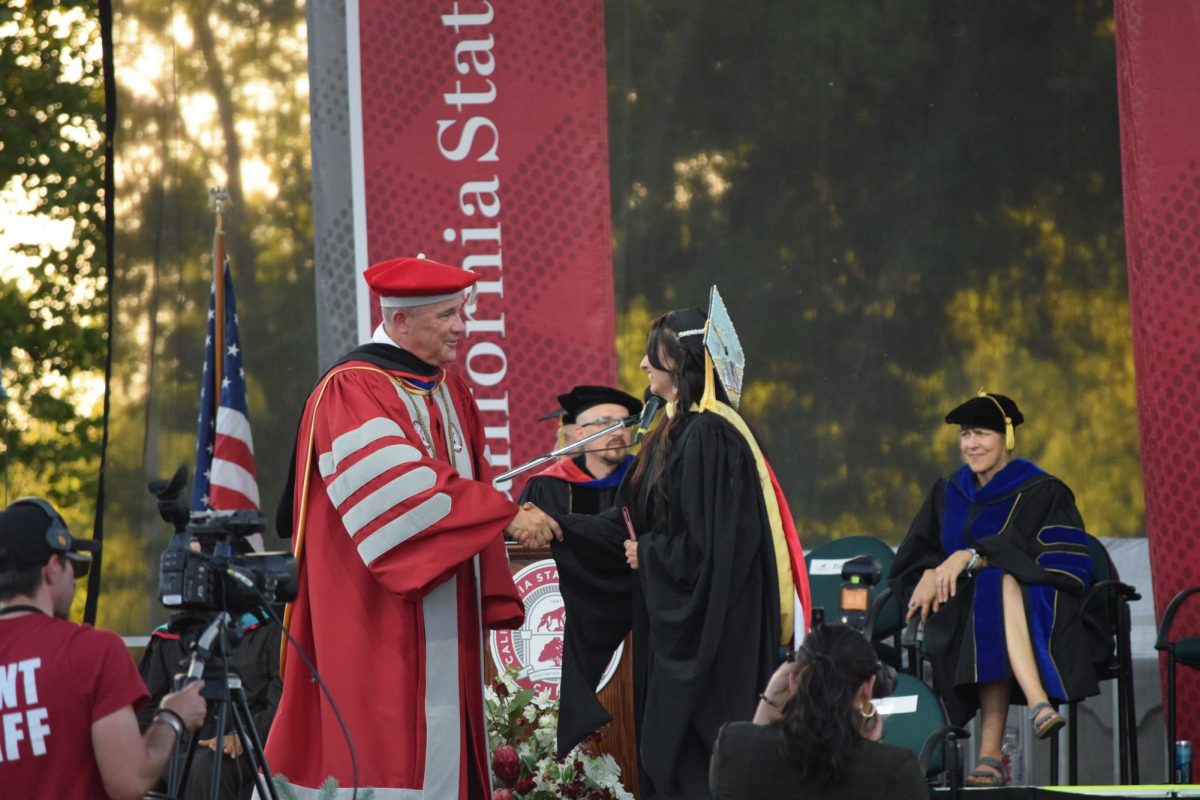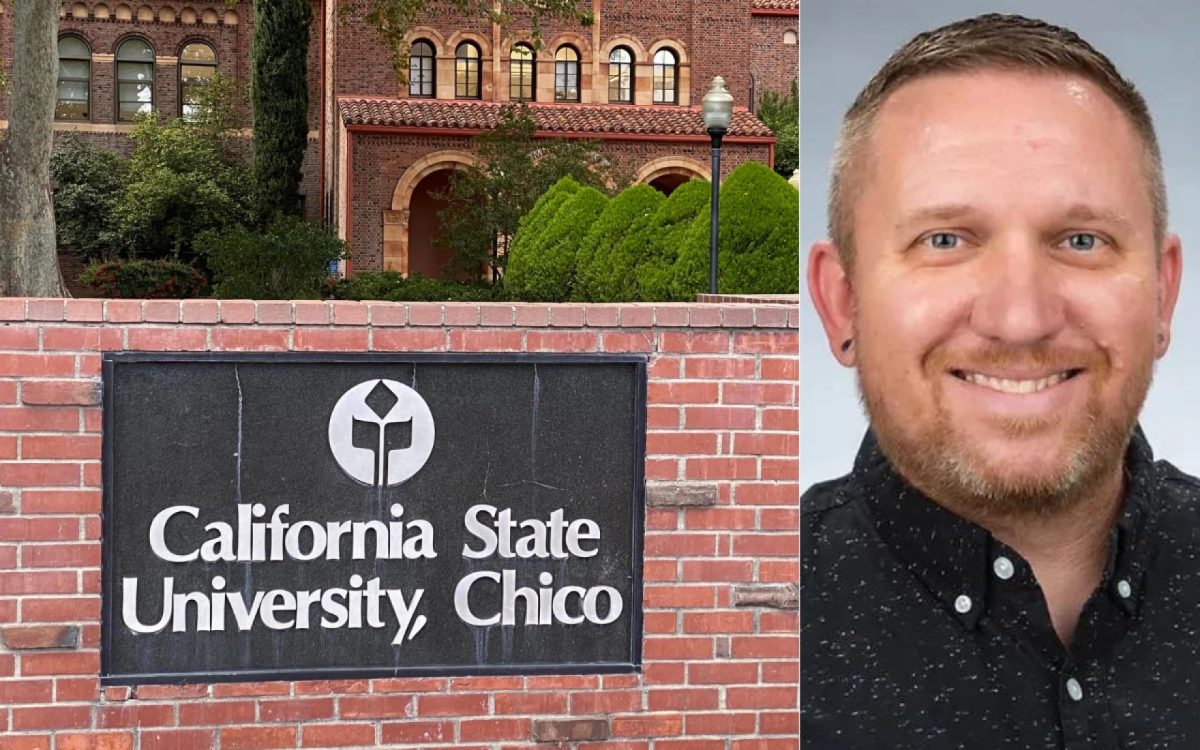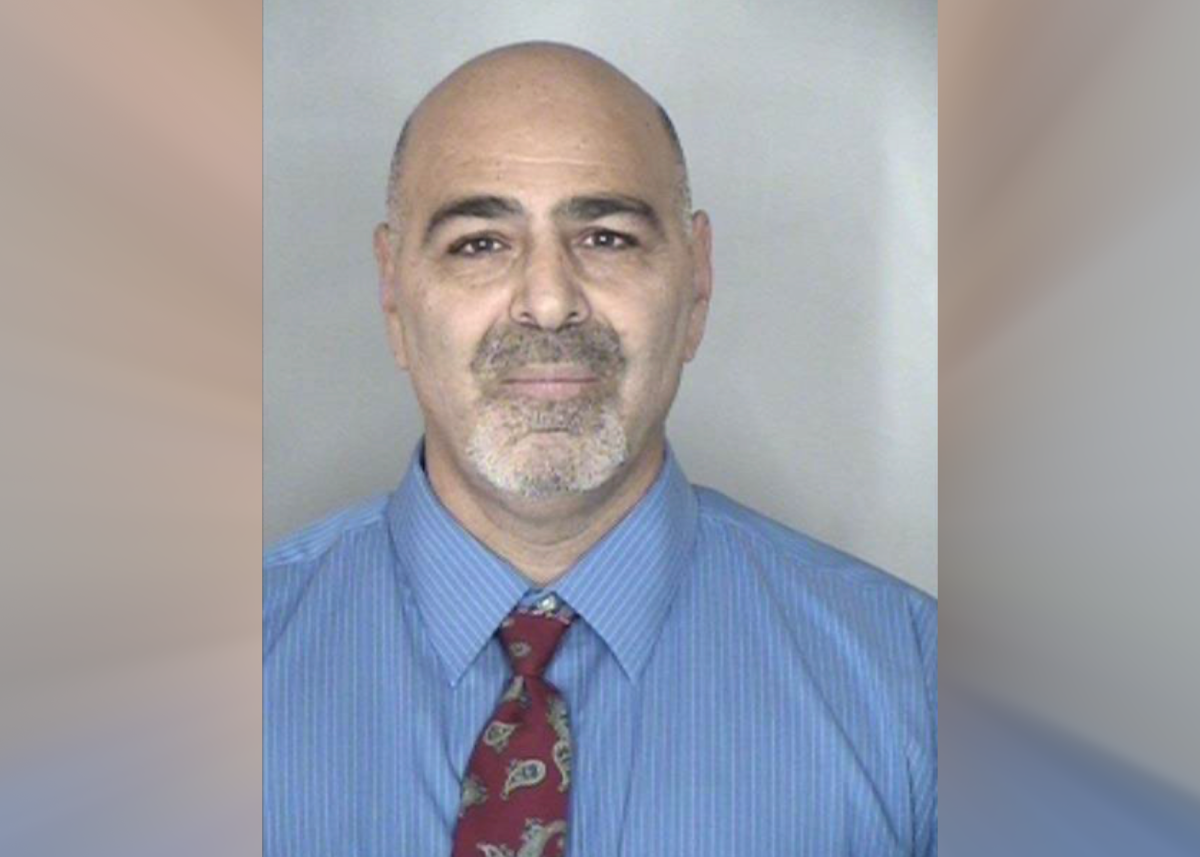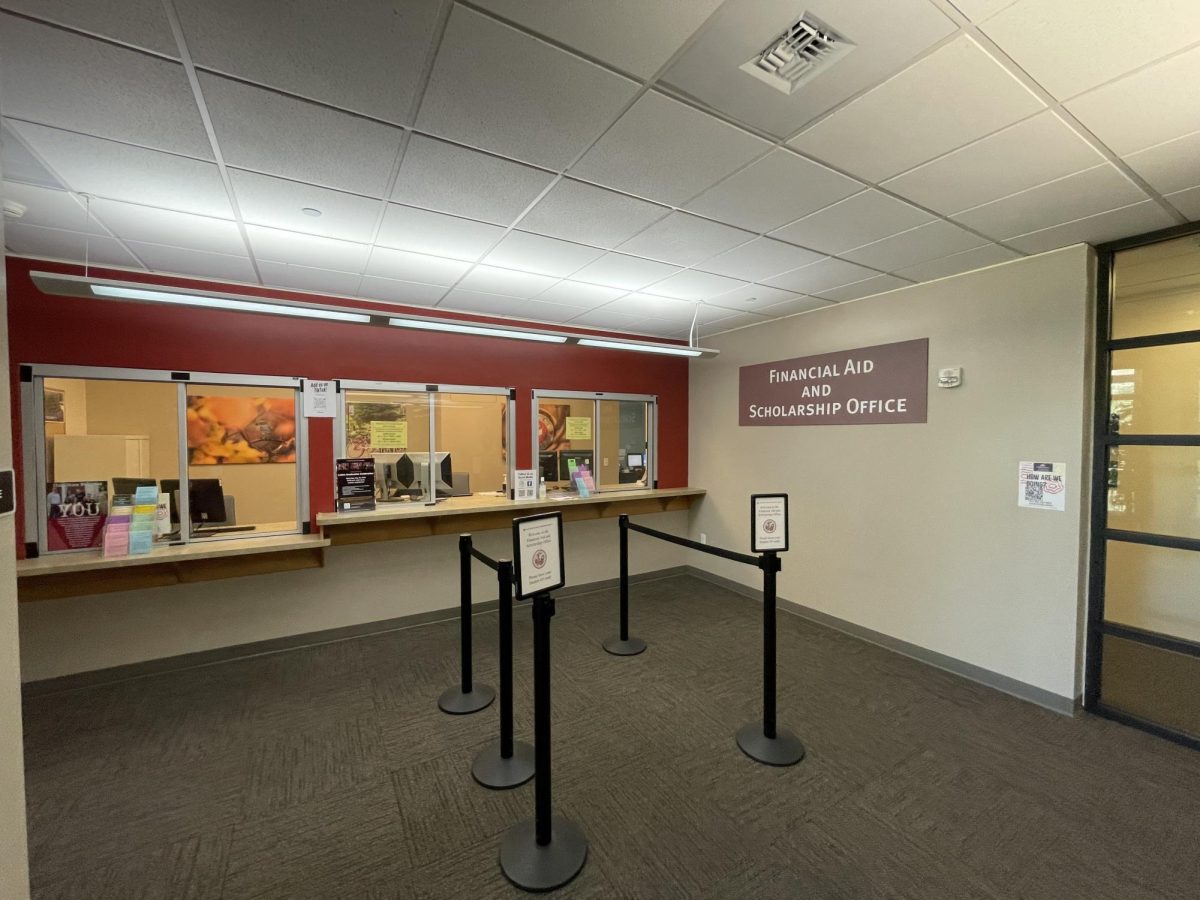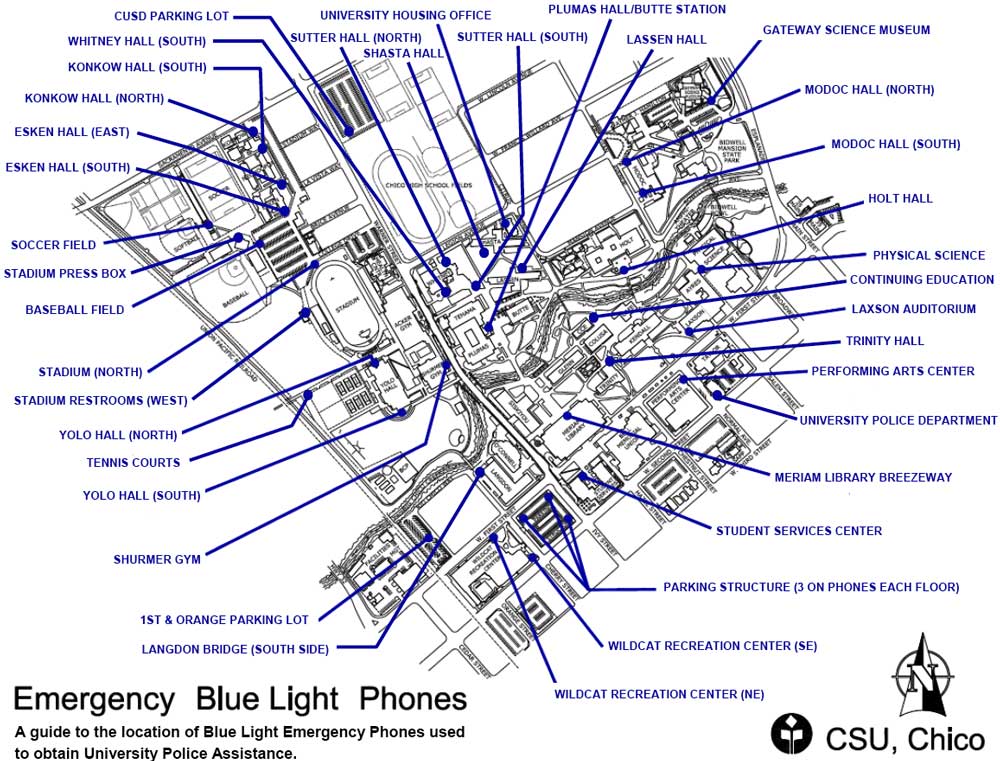
Some college campuses are getting rid of their Emergency Blue Light phones in favor of smart phone safety apps, but Chico State isn’t planning on making the switch.
UC Davis is one of the colleges that are moving away from the Emergency Blue Light phones in favor of new technology. Recently, a variety of smartphone apps have been made, or are in development, that can do the same job as the campus Emergency Blue Light phones. One app called BlueLight has taken what the phone system does and added more safety features.
With close to 40 of the Emergency Blue Light phone towers in place around Chico State, the University Police continues to believe the lights are a cornerstone of school safety.
“It’s another option we have for people to stay safe on campus,” said Corinne Beck, University Police lieutenant.
In the 1970s, Chico State Women’s Center, now known as the Gender & Sexuality Equity Center, received a grant that provided funding for the emergency systems, said Robyn Hearne, University Police chief. Since that time, especially the last 10 years, the system has been consistently updated.
“It takes a lot of maintenance to keep them up, but it’s small compared to their usefulness,” Hearne said.
What makes the Emergency Blue Light phones effective is their proximity around campus and the speed in which the University Police are notified. Having a general location of the incident is also helpful.
In recent years, Chico has updated some of the phones, adding cameras to see what is happening right in front of the machine, Beck said.
Activating the Emergency Blue Light phone can also give a quicker response to a possible emergency. At the University Police station, Beck said they have three levels of priority to which they answer calls:
- The highest priority: calls to the 9-1-1 number
- Second priority: an activated Emergency Blue Light phone system
- Last priority: a non-emergency dispatch call.
Chico State still has some issues with the current system. Besides the constant upkeep needed, there are incidents where the on-campus phones are abused and used for prank calls, Beck said.
When the phones are activated, the University Police will always send officers to the area to ensure that there is no one in danger, Lt. Beck said.
Although some of the phones now have cameras, not all are equipped with the technology so there is not always an automatic visual available.
“Before cell phones, the only option you had on campus was to use the Emergency Blue Light phones,” Beck said.
With the increase of smartphones, companies have started developing phone apps that will do a similar job to what the Emergency Blue Light phones do.
The BlueLight app provides a pinpoint location for the person sending a distress message using the phone’s data plan as well as a variety of other campus safety-friendly features, including:
- Location accuracy of 60 feet or less
- Access to the app’s emergency response system from a phone’s lock screen
- A message system that allows a selected contact to see where the user is at all times and alerts them when the user arrives at their destination
UC Davis got rid of most of their on-campus Emergency Blue Light phones in 2011 because of the wide use of cellphones on campus and the installation of wireless 911 notification, according to the school’s website.
“I believe it is always important to have an understanding of the latest technology and to understand what we might be able to learn from it,” said Emily Peart, Chico State’s Safe Place coordinator. “I do believe, however, that the Emergency Blue Light phones are highly effective in providing a reliable resource for individuals in emergency situations.”
Both Lt. Beck and Chief Hearne agreed that Chico State’s use of the phones is both needed and effective on campus, but they are open to developments in the future.
“We’re always open to see what is out there as technology advances,” Beck said. “We’re always trying to look into something that will benefit us on campus.”
Robert Engels can be reached at [email protected] or @sullayyy on Twitter.








